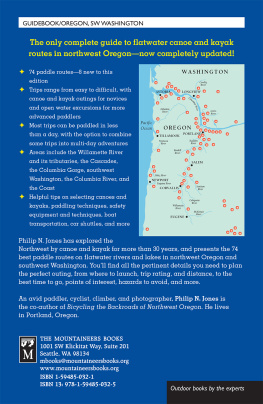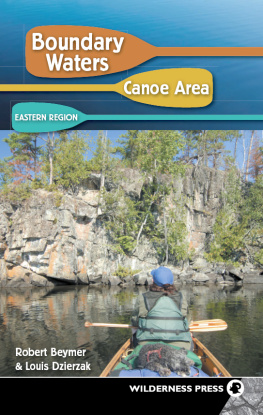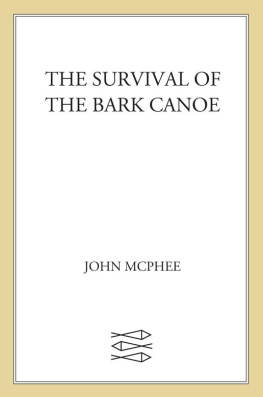From Reindeer Lake to Eskimo Point
From Reindeer Lake
to Eskimo Point
Peter Kazaks
Foreword by George Luste

NATURAL HERITAGE BOOKS
TORONTO
Copyright 2003 by Peter Kazaks
All rights reserved. No portion of this book, with the exception of brief extracts for the purpose of literary or scholarly review, may be reproduced in any form without the permission of the publisher.
Published by Natural Heritage / Natural History Inc.
PO Box 95, Station O, Toronto, ON, Canada M4A 2M8
www.naturalheritagebooks.com
Cover and text design by Blanche Hamill, Norton Hamill Design
Edited by John Parry and Shannon MacMillan
All photographs courtesy of George Luste
Printed and bound in Canada by Hignell Book Printing, Winnipeg, Manitoba
The text in this book was set in a typeface named Minion.
National Library of Canada Cataloguing in Publication
Kazaks, Peter, 1940
From Reindeer Lake to Eskimo Point / Peter Kazaks ; foreword by George Luste.
Includes bibliographical references and index.
ISBN 1-896219-84-5
1. Kazaks, Peter, 1940 2. Canoes and canoeing Saskatchewan, Northern. 3. Canoes and canoeing Manitoba, Northern. 4. Canoes and canoeing Nunavut Keewatin Region. 5. Saskatchewan, Northern Description and travel. 6. Manitoba, Northern Description and travel. 7. Keewatin Region (Nunavut) Description and travel. I. Title.
FC3205.4.K39 2003 917.104648 C20039048926

Natural Heritage / Natural History Inc. acknowledges the financial support of the Canada Council for the Arts and the Ontario Arts Council for its publishing program. It acknowledges the support of the Government of Ontario through the Ontario Media Development Corporations Ontario Book Initiative. It also acknowledges the financial support of the Government of Canada through the Book Publishing Industry Development Program (BPIDP) and the Association for the Export of Canadian Books.
The wonders of nature are many; but, for me, none are as splendid
as Julia, Emily, Karl Kristopher, Hazen or Maia
Contents
16 White Canvas Tents on Hudson Bay
OUR FOURTH CHILD WAS TO be born six weeks before my departure, in 1981, for the summer-long canoe trip described here. My wife, Alexandra, knew that I wanted to seize the opportunity, so she eased my mind about abandoning her and the family and encouraged me to grab it. I am very grateful for her support.
I shared an intense experience with my fellow venturers, Gerd Hartner and Dave Berthelet. We depended on each other. Such an adventure forms a bond that persists even in the absence of regular contact. To George Luste, the fourth member of our cluster of humanity in the wilderness, and a friend for over forty years, I owe a special debt. I would not have considered the trip in the first place without confidence in his wilderness skills and his all-round competence. That trust proved amply justified. George inspired me to go and then led us on the trip which is now among the significant events in my life. Finally, I want to thank the people at Natural Heritage Books, with Shannon MacMillan and Barry Penhale most prominent among them, for making this book a reality.
Peter Kazaks
Davis, California
2003
WHY DOES ANYONE WILLINGLY CHOOSE to go on a long and physically difficult wilderness canoe trip? In truth there will probably be as many varied answers to this question as there are canoeists. But I believe that spirituality and escapism are important reasons for many. They are for me.
We are all lonely pilgrims in our passage through this life. During that all-too-brief journey we encounter other wanderers, we share experiences and, from time to time, we seek to connect with something more meaningful and more compelling than the humdrum of everyday living. The great scientist and human being Albert Einstein expressed it thus: We are all here for a brief sojourn, for what purpose we know not, though we sometimes think we feel it.
The famous Arctic explorer and humanitarian Fridjof Nansen, who won the Nobel Peace Prize in 1922, observed that: The first great thing is to find yourself and for that you need solitude and contemplationor at least sometimes. I tell you, deliverance will not come from the noisy centers of civilization. It will come from the lonely places.
The vast, lonely landscapes of northern Canada provide that solitude in spades. On a long Arctic canoe trip, I escape the consuming concerns of everyday city life and return to the two physical essentials for survival food and warmth. Time and the wilderness experience reawaken the dying embers within my soul. The endless empty horizons of the Arctic barrens diminish my self-importance. I embrace the consuming solitude, the mystery of life, and give thanks for my existence.
Over the past forty years I have experienced many such canoe trips and seen many northern landscapes from the Queen Charlotte Islands and the Stikine River in the west, to the Torngat mountains and the rugged coastline of northern Labrador in the east, from the vast glaciers of Ellesmere and Baffin Islands in the north to the rocky shorelines of Kitchi-Gami (Lake Superior) and the Missinaibi waterway in the south. All these experiences have enriched my life. They have, to a large extent, shaped me and my values. For this I am sincerely grateful.

In this book, Peter Kazaks relates his experiences and observations on our 38-day trip in 1981 from Reindeer Lake in northern Manitoba to Eskimo Point (now Arviat) on Hudson Bay. The other two members were Gerd Hartner, a physics colleague at the University of Toronto, and David Berthelet, a canoeing acquaintance in the Wilderness Canoe Association.
Do I agree with everything as told by Peter in this book? Probably not, but that is to be expected and of no real importance. The truth is subjective and illusory when it comes to recollection and interpretation. Gerd or David or I, if writing about this same 38-day trip, would probably have differing views on some of the events and interactions. But that makes it all the more interesting.
A first experience is usually special and is, of course, unique. In this regard, Peters narrative of his first long canoe trip is special. It represents a perspective that I could no longer recapture in my own telling. It reminds me of my own first encounter with the barrens in 1969. That was a unique, intense and difficult experience because there were so many firsts for me. Making the same trip a second time would not be the same experience. I think that firsts have a special magic about them.
The 1981 journey described in this book was my fourth lengthy venture into the barren lands, following prior long trips on the Dubawnt and Kazan rivers. The Dubawnt trip in 1969 was a tough but memorable introduction to the barrens. My Kazan trip in 1974 was longer and followed J. B. Tyrrells route and notes north from Reindeer Lake to the Kazan River and on to Baker Lake. All three trips started south of the treeline and finished well into the barrens and the open Arctic. This transition from forest cloak to Arctic bareness is a marvellous experience, as one sheds the comfort of warming fires and the protection of the boreal forest. Best of all is the boundary where the trees are few but sufficient, where portaging is much easier, and hiking the eskers is a joy.

Next page










